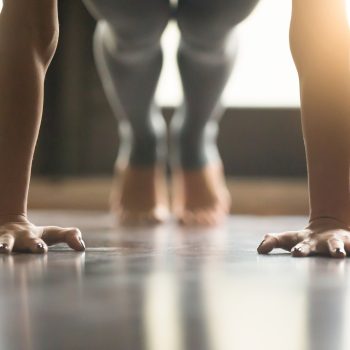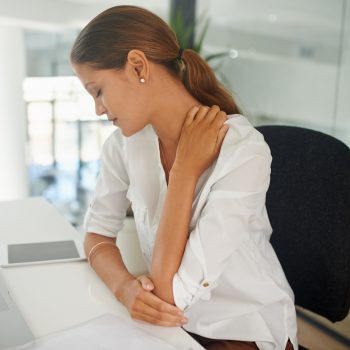Discopathies and low back pain are two of the most common conditions seen among general population. They cause severe back pain and the pain tends to worsen quality of life and can lead to more or less severe forms of disability. The term discopathy refers to the alterations of the intervertebral discs, including the herniated disc, which occurs when the gelatinous material pushes out of the tougher exterior. Herniated discs are closely associated with lifestyle choices: “A sedentary lifestyle and incorrect postures do nothing but favor a herniated disc” recalls Dr. Lara Castagnetti, osteopath and physical and rehabilitative medicine specialist at Humanitas.
The intervertebral disc
Between two vertebrae, there are discs that are designed to absorb stress. If stress becomes too intense, it can cause a tear in the annulus fibrosus. The annulus fibrosus is the circular exterior of the intravertebral disc from which the contained gelatinous material can leak from: “We need to see the discs as bearings between two rigid structures. If they are not perfectly aligned or they need to work harder because of an incorrect posture, the disc will wear out more quickly and cause herniation” explains the expert.
However, it is not only incorrect postures that put the intervertebral discs at risk: “For example, even dysmetria in patients who have one leg longer than the other or who put the weight of one foot on the other, alter the path. In these particular cases, the lumbar region is affected.” Herniated discs are much more frequent in such cases: “The most common is the ‘L5-S1’, which is the segment between the fifth lumbar vertebra and the first sacral one. The dorsal ones are rarer and they are caused by sudden movements in rotation, while the cervical ones are much more common and they too, have a risk factor of incorrect postures.”
Postures to avoid
Yet, what incorrect postures can bring about the formation of a hernia? “For the cervical postures, we can think of those who keep the head bent for a prolonged period of time and in a constant manner. In this way, – explains Dr. Castagnetti – the weight load on the discs increases. For the lumbar postures, it is necessary to pay attention to the seated positions where the spine is not aligned and the buttocks ‘slide’ forward instead of remaining positioned at the backrest.”
Discopathies, such as hernias and protrusions – or the crushing of the intervertebral disc – are not problems that only affect adults: “Even teenagers who maintain incorrect postures, do not exercise, and maintain a sedentary lifestyle with hours spent in front of the computer, are exposed to risks. It is important that they exercise by performing any type of physical activity as long as it involves aerobic exercises. In case of existing hernia or protrusion, they should undergo physiotherapy, postural gymnastics, and osteopathy. The sooner you intervene, the better you can avoid additional problems in the years to come” warns the doctor.
Advice for those at the office
Maintaining a correct posture, with your spine aligned and your shoulders straightened, is the first advice to follow if you are sitting at your desk in front of the PC for a prolonged period of time. However, as soon as you can, it is advised that you try taking a position that involves stretching for a little while: “Perhaps during a phone conversation, it may be helpful to bring your spine to 110 ° if you have a chair with a reclining backrest that you can rest on. In this way, – concludes Dr. Castagnetti – the lumbar area is released and the discs are able to ‘breathe’.”










